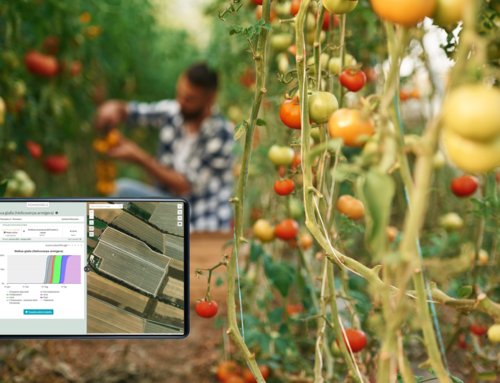Maize is the most cultivated cereal in the world, mainly used for human and animal nutrition, as a biofuel, as a model plant by researchers and as a protagonist of the global GMO panorama.
The cultivation of maize in America (which holds 40% of global production), as in the rest of the world, is increasingly moving in the direction of an agronomic management based on innovative technologies in order to reach greater productivity and sustainability. This transformation, which began about twenty years ago, has given clear results and numerous virtuous examples over time.
Maize is a very demanding crop in nutritional terms and it is sensitive to physical and biological stress: this makes it essential to monitor as precisely and constantly as possible the health of the plant and the state of any threats.
What needs does Agricolus platform meet?
As well as vigor and water stress indices obtained from remote sensing, Agricolus offers specific control and forecast tools for maize (MAYSDSS). The models regarding phenology and irrigation are variety-specific: they are in fact customized by class of precociousness of the hybrid used.
But what are the main adversities of this crop and how are they managed? Maize fears attacks from insects, whose juvenile forms feed on the vegetative part of the plant causing very serious losses. The damage is both direct and indirect, that is, in addition to losses directly caused by the activity of the insect that feeds on plant tissue, we must consider that open ‘wounds’ are ideal entry points for fungal-bacterial infections.
Agricolus offers forecast systems for:
- European corn borer
- Helicoverpa armigera
- Western corn rootworm
European corn borer and Ostrinia nubilialis are two polyphagous lepidoptera (butterflies), that is, able to develop at the expense of different plants, but which are commonly found (and with great regret for those who find them) right in corn. While the larva of Ostrinia can be found inside the stalks, the Helicoverpa prefers the aerial organs and fruits.
The Diabrotica virgifera, on the other hand, is an alien insect (of American origin) of the family of Chryso-Melids, a subgroup of beetles whose adult form is very similar to ladybirds. The larvae of the latter instead feed on the root system of the plant.
So many adversities and so many answers, but what do you boil in the pot? What’s coming soon? One of the main unresolved problems is the presence of mycotoxins, compounds of fungal origin that are very dangerous for human and animal nutrition. We are now in the process of validating the mycotoxin risk prediction model and developing a nitrogen nutrition balance model. These necessary tools will soon be available to farmers, and will enable them to better manage the delicate production of maize.






